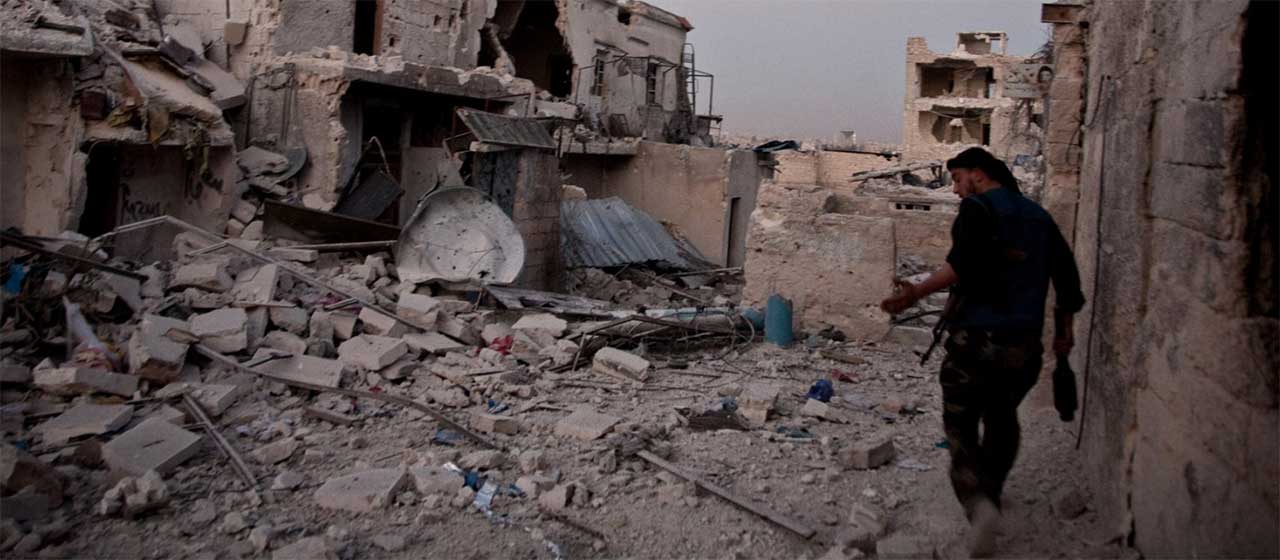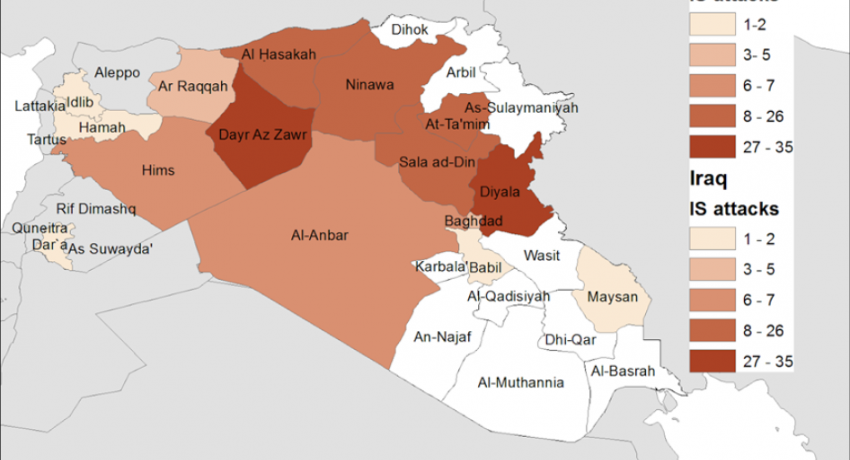Editor’s Note
Islamic State (IS) Terrorist Group is back to Iraq and Syria
There is a high potential for an Islamic State (IS) resurgence in both Iraq and Syria, particularly in former areas of control. Thou-sands of operatives hardened by years of war are spread out across the region with the long-term goal of resurrecting the Cali-phate. Thousands more are active in Idlib (Syria) as part of Al-Qaeda or other jihadist factions. All the underlying issues which facilitated the rise of IS remain and in some case are exacerbated. Even without state support, such groups will continue to destabi-lise parts of Syria and Iraq.
In SHORT term, It is expected that Iraq (Especially Baghdad) will likely see a resurgence of attacks as IS needs to hit the Capital (or a highly symbolic target) to stay relevant.
In Syria, IS will continue to rebuild its forces and will resume its campaign including via the use of car bombs. IS and like-minded groups will also likely return to conducting urban raids, temporarily taking terrain and may target IDP camps and prisons as part of an overall strategy to rebuild its forces and coffers in Iraq and Syria.
In the LONG term, IS and other terror groups will remain in one form or another, fomenting a low level insurgency which never re-ally goes away, and continues to create instability in Syria and across the Middle East and Europe.
Threat from IS is Increasing in Syria and Iraq
The Islamic State in Syria
1. Following the coalition’s destruction of the Islamic State (IS) Caliphate in Barghouz, Syrian govern-ment forces and allies have mobilized towards the Northwest front lines targeting Idlib. Some of the groups present in Idlib are transnational jihadis, notably Hayat Tahrir al-Sham (HTS) and Hurras al-Din, as well as IS remnants. Estimates of their number vary but UN and US Defense department esti-mates converge at around 20,000 to 30,000 fighters (Syrian Government estimates are triple that num-ber). HTS has implemented a governance style similar to ISIS and most groups in the area have some ideological affinities with the Islamic State. Defections to IS remain likely particularly since HTS is viewed by hardline jihadis as too pragmatic and close to Turkey.
2. Rumours of IS’s demise following the fall of Barghouz appear greatly exaggerated. IS is currently waging a terror campaign in recaptured areas of Syria that resembles the resurgence of Al-Qaeda in Iraq (AQI) after 2011. The main difference is that AQI had around 700-1000 fighters then while some claim as many as 30,000 fighters in Iraq and Syria as of May 2019. Attacks by IS fighters started rising in April and May most of them taking place in eastern Syria with a particular concentration along the Euphrates and north to Hasakah from Deir ez Zour. These have been the deadliest attacks since the fall of the Caliphate and ISIS is reconstituting itself in other places such as in Palmyra, the Sukhna de-sert and Tabqa where an increase in cell activity is reported. Kurdish areas have not been spared, res-idents of the Kurdish-populated Muhamad Shirbag village started fleeing to the cities of Kalar and Khanaqin due to poor security situation in the area. Previously-secure northern cities like Qamishli & Hasekah are being attacked with increasing frequency. June saw a decrease in the number of IS at-tacks taking into account improved prevention by security agencies.
3. It is difficult to know how many IS fighters are dispersed in Syria but extrapolating from the 1300 individuals reportedly operating in Badia (a region of desert, semi-desert and steppe in south-eastern Syria) gives us a sense of scale. Another indicator is that some 4000 IS members and their family were reportedly allowed to leave Raqqa and subsequently dispersed.
A tentative floor is provided by the 23rd Analytical Support and Sanctions Monitoring Team (ASSMT) report released by the United Nations in January 2019 placing the number of IS fighters at 14,000–18,000, of whom approximately 3,000 were foreigners.
These estimates are fluid but even at the low end, they constitute a serious threat to stability. There are also a suspected 8,000 ISIS fighters (including 1,000 foreigners) and 70,000 ISIS family members currently housed in a network of detention facilities and internally displaced persons camps. Finally, it is noteworthy that Syrians who were recruited or impressed into the ranks of the Islamic State were allowed to change sides and fight in the ranks of the Kurdish or were sent home. IS is likely to see these fighters as a pool of sympathizers that can return to the fold. It can also refill its ranks by free-ing some of those who are currently incarcerated.
The Islamic State in Iraq
4. ISIS is resurgent in Iraq too. In March, at least a thousand militants are suspected to have crossed from Syria into Iraq. These have subdivided into smaller groups and are active particularly at the pe-riphery where government control is patchy. In Abu Teban for example, residents are reporting incur-sions of IS fighters while in Tarmiya an IED-initiated convoy ambush was reported (June 4th). The group also continues its insurgency in areas such as Ramadi, Diyala, Mosul, Kirkuk, Jurf an Nasr and Fallujah with assassinations of Village/Community leaders and Popular Mobilisation Forces (PMF) fig-ures, as well as IED attacks, none of which is widely reported outside of local media. There were few incidents in Baghdad in May 2019 apart from an attempted car bomb that was discovered in the Abu Ghraib district. Attacks in Iraq went up sharply in May as IS's spring-summer offensive got underway, suicide attacks in particular have been up. This was the most recorded since October 2018. In June, IS claimed to have an armed contingent operating inside Iran, with a leader named as Abu Mujahid al-Farisi. The timing of this announcement may be significant given the ongoing tensions between the US and Iran.
5. In addition to IS, Hurras al-Din is reportedly expanding to largely Sunni-dominated Anbar where it is claiming to protect Sunnis against the Shi‘a-dominated PMF. In contrast to HTS and especially IS, the group has focused on capacity building through training and recruitment and the adoption of hit and run tactics rather than controlling territory. Some intelligence sources have located IS leader Abu Bakr al-Baghdadi in Anbar. Ideologically, the ground is fertile in Anbar, despite the harm caused by the doctrinal association of the Sunni community with the Islamic State, Salafi networks and preaching continue to propagate their ideology. That is also true on Baghdad’s periphery and in marginal socioeconomic areas of major Sunni urban centers. Salafism attracts religiously-oriented youth and most mosques in those areas are controlled by clerics with Salafi inclinations.
6. Despite some efforts to counter this in Baghdad and the centers of major governorates, more peripheral areas continue to remain largely out of reach. Moreover, most rural areas liberated from IS have been abandoned, left lying in ruins. This is compounded by a reductionist approach to counter-terrorism which sees Sunnis with flimsy or imagined ties to IS lumped in with the terror group along with their families and tribe. According to estimates by rights groups and Iraqi officials, such people number between 100,000 and 500,000 people. As in Iraq, such disenfranchised people could provide the future wellspring from which ISIS could draw its fighters.
7. What is more, Iraqi forces remain internally divided among a plethora of armed factions. including the Iraqi Counter Terrorism Service (CTS), the Popular Mobilization Forces (PMF), the Iraqi Army, and tribal militias. Security is uneven. Loosely organized and often at odds with each other, the PMF militias, numbering approximately 50 groups and militias, many of which are backed by Iran, are deeply involved in the fight against IS but rarely coordinate with the CTS. This might be the reason why Iraqi Prime Minister Adel Abdul Mahdi recently issued an official decree that the PMF would be fully integrated into the national armed forces by July’s end. This integration will be challenging as the groups have grown powerful and many act as independent military, economic, and political actors. The good news is that the sectarian elements in some cases seem to have ebbed. For example, many Sunni fighters against IS have joined the PMF, which began as a collection of largely Shiite provisional militias built to fight IS in 2014.
8. FORECAST: In the SHORT term the terrorist threat will be managed in Syria and Iraq although the fighting in Idlib may also eventually lead to dispersal inside/outside Syria and some regrouping under the IS umbrella. In the MEDIUM Term, Damascus but especially Baghdad will likely see a resurgence of attacks as IS needs to hit Capital cities (or a highly symbolic target) to stay relevant. In Syria, IS will continue to rebuild its forces and will, in the short term, resume its campaign including via the use of car bombs. IS and like-minded groups will also likely return to conducting urban raids, temporarily taking terrain and may target IDP camps and prisons as part of an overall strategy to rebuild their forces and coffers in Iraq and Syria. In the LONG term, IS and other terror groups will remain in one form or another, fomenting a low level insurgency which never really goes away, and continues to create instability across the region.


